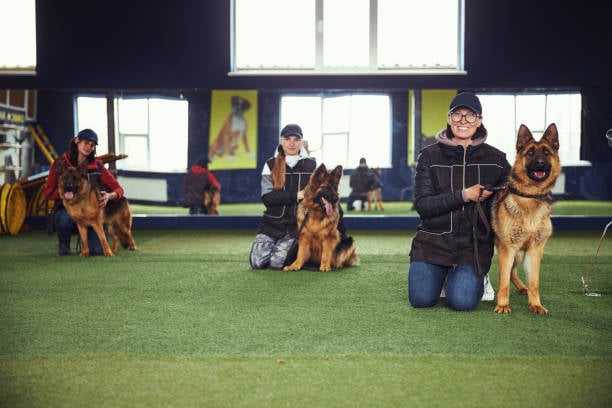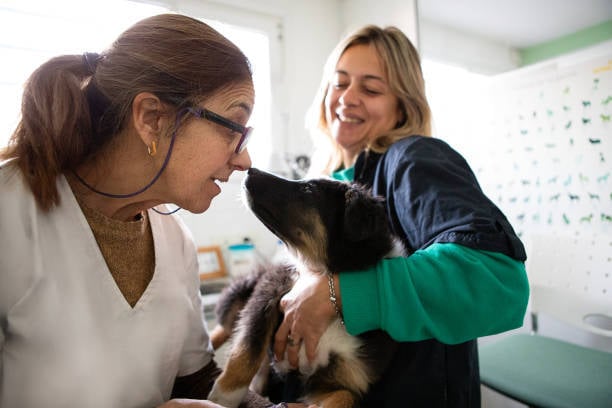Running a pet-care business is a beautiful kind of chaos. The happy bark of a regular camper arriving for daycare. The rhythmic buzz of clippers in the grooming room. The check-ins, the pick-ups, the belly rubs. Every moment matters — and so does how you spend it.
But when your team’s schedule feels more like a free-for-all than a well-oiled machine, inefficiency sneaks in. Tasks pile up. Staff burns out. And that “organized chaos” becomes just… chaos.
Here’s the good news: Better time allocation isn’t about working harder. It’s about working smarter. By planning with intention, leaning into your team’s strengths, and using data to guide your decisions, you can streamline operations, boost morale, and create a calmer, more efficient work environment that doesn't sacrifice care or compassion.
Let’s dig into seven practical strategies to help you allocate staff time more effectively (and maybe even carve out a little extra time for play).
1. Understand Your Traffic Patterns
Step one: Get clear on when your business is busiest and when it’s not. It’s easy to rely on gut instincts (“Mondays are always crazy!”), But nothing beats data. Look at historical trends, whether you use a booking calendar, a POS system, or a pen-and-paper sign-in sheet.
Reporting tools will help you accurately answer questions like:
- When are most pets being dropped off or picked up?
- Are grooming appointments more popular on weekends?
- Do training classes fill up after work hours?
You can schedule staff accordingly by identifying your facility’s natural peaks and valleys, adding support where needed, and trimming shifts during downtime. This strategy keeps your labor costs in check and ensures your team isn’t overwhelmed (or bored).
Tip: Revisit your data monthly. Seasonality, holidays, and promotional campaigns can all unexpectedly shift traffic patterns.

2. Assign Roles Based on Strengths
Your team isn’t a list of job titles; they’re individuals with unique skills, personalities, and passions. And the more you lean into those strengths, the more efficient (and happy) your team (and clients) will be.
Some team members thrive in high-energy, customer-facing roles. Others might prefer the quiet focus of feeding routines or sanitation tasks. Take the time to observe and talk to your staff about what they enjoy and where they feel most effective.
Once you know your team’s strengths, schedule accordingly:
- Your grooming detail queen? Put her on precision tasks like paw trims or breed-specific cuts.
- The staff member who’s a natural with nervous pups? Assign them to intake or quiet-time duty.
- Your super-organized front-desk wizard? Keep them at the check-in/check-out station during peak hours.
Bonus: Matching tasks with natural strengths improves performance, reduces errors, and keeps team members valued and motivated.
3. Standardize Shift Structures
No one likes showing up to work unsure of what they’re doing that day. A standardized shift plan helps eliminate confusion, improve accountability, and ensure critical tasks are completed.
Each shift should include:
- Assigned roles and tasks (e.g., who’s on cleaning, feeding, grooming, customer service, etc.)
- Start-of-day and end-of-day checklists
- A primary point of contact or “lead” for the shift
- A communication protocol for unexpected changes (e.g., call-outs or extra walk-ins)
Having a clear, repeatable structure reduces the time spent making decisions on the fly and helps every shift run more smoothly.
4. Build in Flexibility Through Cross-Training
The pet-care world is full of surprises — a burst pipe, a double-booked grooming appointment, a sick staff member. Cross-training gives your business the agility to pivot without panic.
Train team members to handle a variety of roles, not to replace skilled specialists, but to step in when needed. A kennel tech who can cover the front desk? A daycare attendant who can pitch in with bathing? These “utility players” are invaluable!
Start with basic cross-training in:
- Front desk operations (phones, check-ins, payment)
- Safety and sanitation protocols
- Feeding and medication routines
- Grooming prep and post-care
Create a “skills tracker” so you know who’s trained in what, and encourage ongoing learning as part of staff development.

5. Respect Availability and Energy Levels
Not every employee is built for the early morning rush. Others might shine in the afternoon lull or prefer working behind the scenes.
When possible, align shifts with your team’s natural rhythms and availability. This includes honoring time-off requests, accommodating school or childcare schedules, and being mindful of burnout.
If one team member consistently looks drained after closing shifts, rotate them out. If the 6 a.m. hustle energizes another, make them your early bird lead.
Happy employees are productive employees. Flexible scheduling isn’t just nice—it’s strategic.
6. Use Communication Systems That Work
Whether texting schedules, taping paper notes to the breakroom fridge, or trying to organize a group chat that no one checks, miscommunication wastes valuable time and energy.
Centralize your communication with a clear system for:
- Sharing weekly schedules and last-minute changes
- Logging notes about pet behavior, feeding, or medication
- Documenting completed tasks and shift responsibilities
- Requesting shift swaps or time off
The goal? Reduce time spent asking, guessing, or backtracking — and empower your staff with clarity.
7. Review, Reflect, and Refine
Efficient scheduling is never a “set it and forget it” situation. It requires regular reflection and feedback from your team. Set aside time each month to ask your employees:
- Where did we feel understaffed?
- Were there times when we were overstaffed or idle?
- What tasks are taking longer than expected?
- Are there any recurring bottlenecks?
This insight helps you fine-tune your schedule, make better staffing decisions, and avoid the dreaded cycle of reactive management.
Consider conducting quarterly reviews where your team can voice ideas for improving workflows or shift structures. The people doing the work often have the smartest ideas about improving it.

Bringing It All Together
These tips aren’t about pushing your staff harder—they’re about helping them work smarter. By leveraging data, honoring strengths and preferences, and streamlining operations, you'll foster a healthier, more sustainable work environment.
You’ll also free up mental space to focus on what you love: caring for pets, connecting with clients, and growing your business.
Ready to Take the Guesswork Out of Scheduling?
If you spend hours juggling sticky notes, spreadsheets, and last-minute texts, it might be time for a smarter solution.
With Gingr's Business Analytics, you can track peak hours, labor trends, and booking patterns across your entire operation. Compare periods, visualize trends, and confidently make data-backed decisions—no setup required.
And with integrated employee scheduling tools, you can:
- Create and assign shifts with a few clicks
- View availability and manage time-off requests
- Break down labor hours by employee or team
- Track employee activity alongside performance data—all in one place
No more double-booking. No more staffing stress. Just more time doing what you love.
Join the Pack
Thousands of pet-care pros are already using Gingr to streamline operations, schedule smarter, and create tail-wagging experiences for pets and people alike.
Book a demo today and see how Gingr helps pet-care teams thrive — without the chaos!
Subscribe to the Gingr Blog







